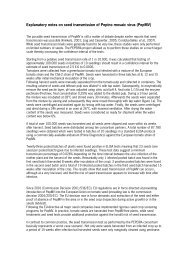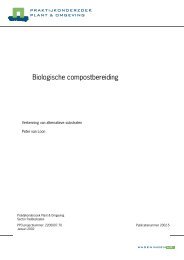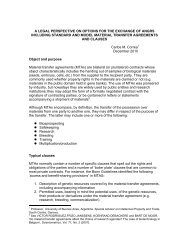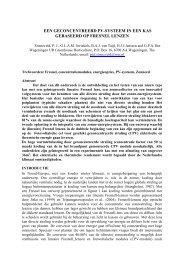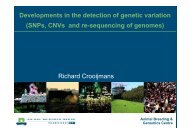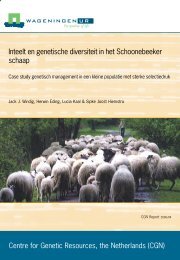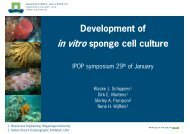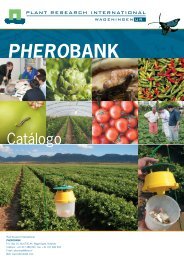Oil spill dispersant article
Oil spill dispersant article
Oil spill dispersant article
Create successful ePaper yourself
Turn your PDF publications into a flip-book with our unique Google optimized e-Paper software.
All the evidence that has been gathered during<br />
over 30 years of research indicates that there<br />
is generally only a small risk to marine life<br />
when dispersing <strong>spill</strong>ed oil.<br />
This is not to say that there is no risk, or<br />
that the risk should be ignored. It cannot (and<br />
should not) be denied that dispersed oil has<br />
the potential to cause toxic effects to marine<br />
life, but only if <strong>dispersant</strong>s are used where<br />
there is inadequate dilution.<br />
Quantifying the risk of using<br />
<strong>dispersant</strong>s<br />
The risk of using <strong>dispersant</strong>s<br />
must be quantifi ed to<br />
enable rational judgements<br />
to be made about <strong>dispersant</strong><br />
use.<br />
The use of toxicity test<br />
results can be combined<br />
with computer modelling<br />
techniques to produce a<br />
quantitative assessment of<br />
the likely effects of dispersing<br />
oil. The modelling<br />
can generate 3-dimensional<br />
representations of the dispersed<br />
oil and WAF<br />
concentration profi les (or<br />
concentration profi les of<br />
individual chemical compounds<br />
from the oil) that<br />
will be produced by using<br />
PLANNED USE OF DISPERSANTS<br />
<strong>dispersant</strong>s. Furthermore, the models can calculate<br />
the differences in water volume to be<br />
exposed to water-soluble WAF (BTX) concentrations<br />
above the indicated limits for acute<br />
toxicity with and without use of <strong>dispersant</strong>s<br />
(see fi gures).<br />
Predicting the the ultimate fate of dispersed<br />
oil is uncertain and some questions remain<br />
unanswered:<br />
• How rapidly does the potential for toxic<br />
Volume (km 3 ) Volume (km 3 )<br />
0,06<br />
0,05<br />
0,04<br />
0,03<br />
0,02<br />
0,01<br />
0<br />
0,06<br />
0,05<br />
0,04<br />
0,03<br />
0,02<br />
0,01<br />
0<br />
Volume (km3) of WAF-concentrations<br />
above 10, 50 and 500 ppb, respectively,<br />
from a <strong>spill</strong> with 100 m3 Balder crude<br />
oil (10 m/s wind) using the OSCAR model<br />
system.<br />
effects caused by dispersed oil or WAF<br />
decrease as the oil is biodegraded <br />
• Under what conditions will dispersed oil<br />
interact with suspended sediment <br />
These topics are the subject of current and<br />
future research.<br />
NEBA (Net Environmental<br />
Benefit Analysis)<br />
The purpose of any oil <strong>spill</strong> response method<br />
should be to reduce the amount of damage<br />
done by an oil <strong>spill</strong>. The damage might<br />
be to ecological resources, such as sea<br />
Without response<br />
Volume > 10.PPB<br />
Volume > 50.PPB<br />
Volume > 500.PPB<br />
0 0,2 0,4 0,6 0,8 1 1,2 1,4 1,6<br />
After application of <strong>dispersant</strong> from boat<br />
Volume > 10.PPB<br />
Volume > 50.PPB<br />
Volume > 500.PPB<br />
0 0,2 0,4 0,6 0,8 1 1,2 1,4 1,6<br />
Time (Days)<br />
birds and sensitive habitats,<br />
or economic damage to<br />
resources, such as fi sheries<br />
or tourism. The concept<br />
of NEBA is that, in some<br />
circumstances, it might be<br />
reasonable to sustain some<br />
damage to a particular<br />
resource as the result of<br />
oil <strong>spill</strong> response, provided<br />
that the response prevents<br />
a greater degree of damage<br />
occurring to another<br />
resource. NEBA considers<br />
the overall damage that<br />
might be caused by an oil<br />
<strong>spill</strong> and does not concentrate<br />
on one particular<br />
aspect.<br />
Comparing the outcomes of<br />
different response methods<br />
An oil <strong>spill</strong> response method might seem<br />
capable of reducing both the ecological and<br />
economic elements of damage caused by an<br />
oil <strong>spill</strong>; recovering small volumes of <strong>spill</strong>ed<br />
oil at sea will eventually prevent oiling of sea<br />
birds and it will prevent shoreline contamination.<br />
However, mechanical recovery of large<br />
volumes of <strong>spill</strong>ed oil at sea can be a slow<br />
and only partially successful process. During<br />
24



